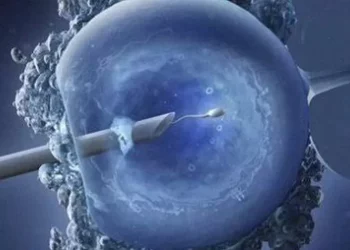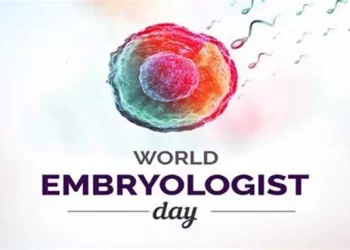Ejaculatory duct obstruction (EDO) is a medical condition characterized by a blockage in the ducts that facilitate the passage of sperm from the seminal vesicles and vas deferens to the urethra during ejaculation. This obstruction can impede the normal flow of semen, leading to issues such as low ejaculate volume, low sperm count, and infertility. EDO can be categorized based on the nature of the blockage, which may be physical or functional, and has significant implications for male reproductive health.
Prevalence
EDO is a relatively rare condition, affecting approximately 1% of individuals assigned male at birth. Despite its rarity, it is a significant contributor to male infertility, accounting for an estimated 5% of cases of azoospermia, a condition where there is no measurable sperm in the ejaculate. The impact of EDO on fertility underscores the importance of understanding its causes, diagnosis, and treatment options.
Types of EDO
EDO can manifest in several forms, each with distinct characteristics and implications for treatment and prognosis:
1. Complete Obstruction: This occurs when both ejaculatory ducts are entirely blocked, preventing any semen from passing through during ejaculation. This type typically results in very low or absent ejaculate volume and can lead to severe infertility issues.
2. Incomplete Obstruction: In this type, either one ejaculatory duct is completely blocked, or both are partially obstructed. This results in a reduced flow of semen, leading to lower ejaculate volume and potentially reduced sperm count.
3. Functional Obstruction: In cases of functional EDO, there is no physical blockage in the ejaculatory ducts. However, the symptoms mimic those of complete obstruction. This could be due to neurological or muscular issues affecting the ejaculation process, making diagnosis and treatment more challenging.
Symptoms
The symptoms of EDO can vary depending on the extent and type of the obstruction. Common symptoms include:
1. Low Ejaculate Volume: One of the most prominent symptoms, where the volume of ejaculate is significantly reduced due to the blockage.
2. Low Sperm Count: As the passage of sperm is obstructed, the sperm count in the ejaculate is often lower than normal.
3. Pain: Pain during or after ejaculation is a common symptom and can vary in intensity.
4. Hematospermia: The presence of blood in the semen, which can be alarming and may indicate an underlying issue with the ejaculatory ducts.
5. Hematuria: Blood in the urine can also occur, though it is less common than hematospermia.
6. Infertility: Due to the reduced sperm count and low ejaculate volume, individuals with EDO often face challenges with fertility.
Causes
The causes of EDO can be broadly classified into congenital and acquired factors:
Congenital Causes
1. Cystic Fibrosis Gene Mutations: One of the most common congenital causes of EDO is linked to mutations in the cystic fibrosis transmembrane conductance regulator (CFTR) gene. Individuals with cystic fibrosis or carriers of CFTR mutations can develop congenital bilateral absence of the vas deferens (CBAVD), which often leads to EDO.
2. Congenital Cysts: Mullerian duct cysts or other congenital cysts can obstruct the ejaculatory ducts from birth, leading to EDO. These cysts may compress or block the ducts, preventing the passage of semen.
Acquired Causes
1. Epididymitis: Inflammation of the epididymis, often due to bacterial infection, can lead to scarring and obstruction of the ejaculatory ducts. This condition is commonly associated with sexually transmitted infections (STIs) or urinary tract infections (UTIs).
2. Urinary Tract Infections (UTIs): Recurrent or severe UTIs can cause inflammation and scarring in the urogenital tract, potentially leading to EDO.
3. Scar Tissue: Surgical procedures, trauma, or infections can result in the formation of scar tissue, which may block the ejaculatory ducts. This is a common cause in individuals with a history of pelvic surgeries or injuries.
4. Cysts: Acquired cysts, such as prostatic cysts, can develop later in life and obstruct the ejaculatory ducts. These cysts may arise due to infections, inflammation, or benign prostatic hyperplasia (BPH).
5. Previous Surgeries: Surgical interventions, particularly those involving the prostate or seminal vesicles, can lead to scar formation and subsequent obstruction of the ejaculatory ducts.
Diagnosis
Diagnosing EDO involves a combination of clinical evaluation, imaging studies, and specialized tests to confirm the presence and extent of the obstruction. Key diagnostic methods include:
1. Transrectal Ultrasound (TRUS): TRUS is a primary imaging modality used to visualize the prostate, seminal vesicles, and ejaculatory ducts. It helps identify structural abnormalities, such as cysts or dilated seminal vesicles, which may indicate an obstruction.
2. Magnetic Resonance Imaging (MRI): MRI can provide detailed images of the pelvic structures and is particularly useful in identifying soft tissue abnormalities that may not be visible on ultrasound.
3. Vasography: This imaging technique involves injecting a contrast dye into the vas deferens and taking X-rays to visualize the ejaculatory ducts. It can help identify blockages and their exact location.
4. Semen Analysis: A comprehensive semen analysis is essential to evaluate ejaculate volume, sperm count, and other parameters. Abnormal results can prompt further investigation for EDO.
5. Needle Aspiration of Seminal Vesicles: This procedure involves aspirating fluid from the seminal vesicles to check for the presence of sperm. The absence of sperm in the aspirated fluid despite normal spermatogenesis suggests an obstruction.
6. Hormonal Evaluation: Blood tests to measure hormone levels, such as testosterone and follicle-stimulating hormone (FSH), can help rule out other causes of infertility and support the diagnosis of EDO.
Treatment
The treatment of EDO aims to remove the obstruction and restore normal semen flow, thereby improving fertility outcomes. The choice of treatment depends on the type and severity of the obstruction. Common treatment options include:
1. Transurethral Resection of the Ejaculatory Ducts (TURED): TURED is a minimally invasive surgical procedure used to remove obstructions in the ejaculatory ducts. It involves inserting a resectoscope through the urethra and making small incisions in the ducts to clear the blockage. This procedure can significantly improve semen parameters and fertility in many cases.
2. Aspiration and Sclerotherapy: For cases involving cysts, aspiration of the cystic fluid followed by sclerotherapy (injection of a sclerosing agent to collapse the cyst) can be an effective treatment.
3. Antibiotics: In cases where EDO is caused by infections, a course of antibiotics may be prescribed to treat the underlying infection and reduce inflammation.
4. Hormonal Therapy: If hormonal imbalances contribute to the symptoms, hormonal therapy may be recommended to restore normal function.
5. Assisted Reproductive Techniques (ART): For individuals who do not achieve successful outcomes with surgical treatments, ART such as in vitro fertilization (IVF) or intracytoplasmic sperm injection (ICSI) can be used. Sperm can be retrieved directly from the testes or epididymis for use in these procedures.
Conclusion
Ejaculatory duct obstruction is a significant but treatable cause of male infertility. Understanding its causes, whether congenital or acquired, is crucial for accurate diagnosis and effective treatment. Advances in diagnostic techniques, such as transrectal ultrasound and MRI, have improved the ability to identify and characterize EDO. Treatment options, particularly surgical interventions like TURED, offer promising outcomes for restoring fertility. For those who do not achieve successful results with conventional treatments, assisted reproductive technologies provide alternative pathways to parenthood. Continued research and clinical advancements are essential to further improve the management and outcomes for individuals affected by EDO.
Related Topics:
The Impact of Obesity on Fertility: Definition & How it Works
Infertility and Depression Statistics: Causes & Risk Factors
Things You Need To Know: Does Hepatitis B Cause Infertility?



























